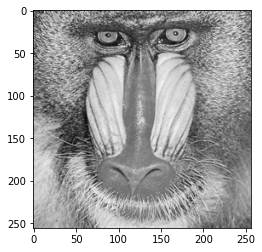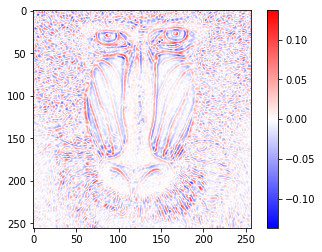NumpyでDoG(Diffrence of Gaussian)フィルターを実装してみます。
DoGフィルターでは、$\sigma$の値が異なる2つのガウシアンフィルターをそれぞれ適用し、その差分を求めます。
まず、DoGフィルターを適用する画像を読み込んでグレースケール画像にします。
import numpy as np
import matplotlib.pyplot as plt
original_image = plt.imread(image_name)
if np.issubdtype(original_image.dtype, np.integer):
original_image = original_image / np.iinfo(original_image.dtype).max
gray_image = 0.2116 * original_image[:,:,0] + 0.7152 * original_image[:,:,1] + 0.0722 * original_image[:,:,2]
plt.imshow(gray_image, cmap='gray')
ガウシアンフィルターのカーネルを作成する関数と畳み込みを行う関数を定義します。ガウシアンフィルターの詳細は以下の記事を参照してください。
【画像処理】Numpyで平滑化フィルター - Qiita
def _convolve2d(image, kernel):
shape = (image.shape[0] - kernel.shape[0] + 1, image.shape[1] - kernel.shape[1] + 1) + kernel.shape
strides = image.strides * 2
strided_image = np.lib.stride_tricks.as_strided(image, shape, strides)
return np.einsum('kl,ijkl->ij', kernel, strided_image)
def _convolve2d_multichannel(image, kernel):
convolved_image = np.empty((image.shape[0] - kernel.shape[0] + 1, image.shape[1] - kernel.shape[1] + 1, image.shape[2]))
for i in range(image.shape[2]):
convolved_image[:,:,i] = _convolve2d(image[:,:,i], kernel)
return convolved_image
def _pad_singlechannel_image(image, kernel_shape, boundary):
return np.pad(image, ((int(kernel_shape[0] / 2),), (int(kernel_shape[1] / 2),)), boundary)
def _pad_multichannel_image(image, kernel_shape, boundary):
return np.pad(image, ((int(kernel_shape[0] / 2),), (int(kernel_shape[1] / 2),), (0,)), boundary)
def convolve2d(image, kernel, boundary='edge'):
if image.ndim == 2:
pad_image = _pad_singlechannel_image(image, kernel.shape, boundary) if boundary is not None else image
return _convolve2d(pad_image, kernel)
elif image.ndim == 3:
pad_image = _pad_multichannel_image(image, kernel.shape, boundary) if boundary is not None else image
return _convolve2d_multichannel(pad_image, kernel)
def create_gaussian_kernel(size=(5, 5), sigma=1):
center = ((size[0] - 1) / 2, (size[1] - 1) / 2)
sigma2 = 2 * sigma * sigma
kernel = np.fromfunction(lambda y, x: np.exp(-((x - center[1]) ** 2 + (y - center[0]) ** 2) / sigma2), size)
kernel = kernel / np.sum(kernel)
return kernel
DoGフィルターを適用します。
def dog_filter(image, sigma1=2.0, sigma2=1.0, size=(7, 7), boundary='edge'):
kernel1 = create_gaussian_kernel(size=size, sigma=sigma1)
kernel2 = create_gaussian_kernel(size=size, sigma=sigma2)
gauss_image1 = convolve2d(image, kernel1, boundary=boundary)
gauss_image2 = convolve2d(image, kernel2, boundary=boundary)
return gauss_image1 - gauss_image2
dog_image = dog_filter(gray_image)
value_range = max(abs(dog_image.min()), abs(dog_image.max()))
plt.imshow(dog_image, cmap='bwr', vmin=-value_range, vmax=value_range)
plt.colorbar()
実装したコードはGoogle Colaboratoryに置いてあります。

